
Height is almost completely determined by genetics
A newly published study from the international Genetic Investigation of Anthropometric Traits (GIANT) Consortium gives scientists a better look at the biology of height and offers a model for investigating traits and diseases caused by many common gene changes acting together.
Cambridge, Massachusetts — The largest genome-wide association study (GWAS) to date, involving more than 300 institutions and more than 250,000 subjects, roughly doubles the number of known gene regions influencing height to more than 400. The findings are published online in Nature Genetics.
“Height is almost completely determined by genetics, but our earlier studies were only able to explain about 10 percent of this genetic influence,” says Joel Hirschhorn, MD, PhD, of Boston Children’s Hospital and the Broad Institute of MIT and Harvard, leader of the GIANT Consortium and co-senior investigator on the study. “Now, by doubling the number of people in our study, we have a much more complete picture of how common genetic variants affect height—how many of them there are and how much they contribute.”
The GIANT investigators, numbering in the hundreds, shared and analyzed data from the genomes of 253,288 people. They checked about two million common genetic variants (those that showed up in at least 5 percent of their subjects). From this pool, they pinned down 697 (in 424 gene regions) as being related to height, the largest number to date associated with any trait or disease.
“We can now explain about 20 percent of the heritability of height, up from about 12 percent where we were before,” says co-first author Tonu Esko, PhD, of Boston Children’s Hospital, the Broad Institute, and the University of Tartu (Estonia).
“The study also narrows down the genomic regions that contain a substantial proportion of remaining variation—to be discovered with even larger sample sizes,” adds co-senior investigator Peter Visscher, PhD, of the University of Queensland, Australia.
Greater size, greater power
Height is a model trait for understanding how human genetics works—especially for traits produced by not one gene, but many. Height is easy to measure, and an estimated 80 percent of variation in height is genetic.
Previous large-scale genome-wide association studies (GWAS) have indicated that a large number of genes influence height, and suggested that the majority of heritability comes from common genetic variants, not rare ones. Because sample sizes have not been large enough to draw definitive conclusions, the GIANT team built the largest sample to date.
“When you double the sample size and increase your statistical power, you can make new discoveries,” says Hirschhorn. “Our results prioritize many genes and pathways as important in skeletal growth during childhood. Without a highly collaborative model, there’s no way we could get this work done.”
The researchers believe their results answer critics of population-scale GWAS, who have argued that increasing the sample size yields diminishing returns or results that become meaningless.
“In 2007 we published the first paper that identified the first common height gene, and we have now identified nearly 700 genetic variants that are involved in determining height,” says co-senior investigator Timothy Frayling, PhD, of the University of Exeter, U.K. “We believe that large genetic studies could yield similarly rich lists in a variety of other traits.”
The biology of height
Many of the 697 height-related genetic variants were located near genes known to be involved in growth, but there were also plenty of surprises.
“There were some pathways that we knew were important, but had not come out in previous GWAS,” says Hirschhorn, who is also an endocrinologist at Boston Children’s. “Many of the genes we identified are likely to be important regulators of skeletal growth, but were not known to be involved until now. Some may also be responsible for unexplained syndromes of abnormal skeletal growth in children. As you increase the sample size, you get more biology.”
For example, the mTOR gene is well known to be involved in cellular growth, but had not previously been connected with human skeletal growth. Other genes confirmed as important include genes involved in metabolism of collagen (a component of bone) and chondroitin sulfate (a component of cartilage), as well as networks of genes active in growth plates, the area of growing tissue near the ends of the long bones. Still other genes point to biology whole relationship with height isn’t yet known.
Among GIANT’s future goals is to look at variants that occur at lower than 5 percent frequency, and to look for variants in the non-protein-coding portions of genes.
In addition to Wood and Esko, the study’s co-first authors were Sailaja Vedantam and Tune Pers, PhD, Boston Children’s Hospital/Broad Institute; Jian Yang, PhD, University of Queensland (Brisbane, Australia) and Stefan Gustafsson, PhD, Uppsala University (Uppsala, Sweden). The study’s numerous funding sources included the March of Dimes and grants from the National Institutes of Health and many other countries.
Reference: “Defining the role of common variation in the genomic and biological architecture of adult human height” by Andrew R Wood, Tonu Esko, Jian Yang, Sailaja Vedantam, Tune H Pers, Stefan Gustafsson, Audrey Y Chu, Karol Estrada, Jian’an Luan, Zoltán Kutalik, Najaf Amin, Martin L Buchkovich, Damien C Croteau-Chonka, Felix R Day, Yanan Duan, Tove Fall, Rudolf Fehrmann, Teresa Ferreira, Anne U Jackson, Juha Karjalainen, Ken Sin Lo, Adam E Locke, Reedik Mägi, Evelin Mihailov, Eleonora Porcu, Joshua C Randall, André Scherag, Anna A E Vinkhuyzen, Harm-Jan Westra, Thomas W Winkler, Tsegaselassie Workalemahu, Jing Hua Zhao, Devin Absher, Eva Albrecht, Denise Anderson, Jeffrey Baron, Marian Beekman, Ayse Demirkan, Georg B Ehret, Bjarke Feenstra, Mary F Feitosa, Krista Fischer, Ross M Fraser, Anuj Goel, Jian Gong, Anne E Justice, Stavroula Kanoni, Marcus E Kleber, Kati Kristiansson, Unhee Lim, Vaneet Lotay, Julian C Lui, Massimo Mangino, Irene Mateo Leach, Carolina Medina-Gomez, Michael A Nalls, Dale R Nyholt, Cameron D Palmer, Dorota Pasko, Sonali Pechlivanis, Inga Prokopenko, Janina S Ried, Stephan Ripke, Dmitry Shungin, Alena Stancáková, Rona J Strawbridge, Yun Ju Sung, Toshiko Tanaka, Alexander Teumer, Stella Trompet, Sander W van der Laan, Jessica van Setten, Jana V Van Vliet-Ostaptchouk, Zhaoming Wang, Loïc Yengo, Weihua Zhang, Uzma Afzal, Johan Ärnlöv, Gillian M Arscott, Stefania Bandinelli, Amy Barrett, Claire Bellis, Amanda J Bennett, Christian Berne, Matthias Blüher, Jennifer L Bolton, Yvonne Böttcher, Heather A Boyd, Marcel Bruinenberg, Brendan M Buckley, Steven Buyske, Ida H Caspersen, Peter S Chines, Robert Clarke, Simone Claudi-Boehm, Matthew Cooper, E Warwick Daw, Pim A De Jong, Joris Deelen, Graciela Delgado, Josh C Denny, Rosalie Dhonukshe-Rutten, Maria Dimitriou, Alex S F Doney, Marcus Dörr, Niina Eklund, Elodie Eury, Lasse Folkersen, Melissa E Garcia, Frank Geller, Vilmantas Giedraitis, Alan S Go, Harald Grallert, Tanja B Grammer, Jürgen Gräßler, Henrik Grönberg, Lisette C P G M de Groot, Christopher J Groves, Jeffrey Haessler, Per Hall, Toomas Haller, Goran Hallmans, Anke Hannemann, Catharina A Hartman, Maija Hassinen, Caroline Hayward, Nancy L Heard-Costa, Quinta Helmer, Gibran Hemani, Anjali K Henders, Hans L Hillege, Mark A Hlatky, Wolfgang Hoffmann, Per Hoffmann, Oddgeir Holmen, Jeanine J Houwing-Duistermaat, Thomas Illig, Aaron Isaacs, Alan L James, Janina Jeff, Berit Johansen, Åsa Johansson, Jennifer Jolley, Thorhildur Juliusdottir, Juhani Junttila, Abel N Kho, Leena Kinnunen, Norman Klopp, Thomas Kocher, Wolfgang Kratzer, Peter Lichtner, Lars Lind, Jaana Lindström, Stéphane Lobbens, Mattias Lorentzon, Yingchang Lu, Valeriya Lyssenko, Patrik K E Magnusson, Anubha Mahajan, Marc Maillard, Wendy L McArdle, Colin A McKenzie, Stela McLachlan, Paul J McLaren, Cristina Menni, Sigrun Merger, Lili Milani, Alireza Moayyeri, Keri L Monda, Mario A Morken, Gabriele Müller, Martina Müller-Nurasyid, Arthur W Musk, Narisu Narisu, Matthias Nauck, Ilja M Nolte, Markus M Nöthen, Laticia Oozageer, Stefan Pilz, Nigel W Rayner, Frida Renstrom, Neil R Robertson, Lynda M Rose, Ronan Roussel, Serena Sanna, Hubert Scharnagl, Salome Scholtens, Fredrick R Schumacher, Heribert Schunkert, Robert A Scott, Joban Sehmi, Thomas Seufferlein, Jianxin Shi, Karri Silventoinen, Johannes H Smit, Albert Vernon Smith, Joanna Smolonska, Alice V Stanton, Kathleen Stirrups, David J Stott, Heather M Stringham, Johan Sundström, Morris A Swertz, Ann-Christine Syvänen, Bamidele O Tayo, Gudmar Thorleifsson, Jonathan P Tyrer, Suzanne van Dijk, Natasja M van Schoor, Nathalie van der Velde, Diana van Heemst, Floor V A van Oort, Sita H Vermeulen, Niek Verweij, Judith M Vonk, Lindsay L Waite, Melanie Waldenberger, Roman Wennauer, Lynne R Wilkens, Christina Willenborg, Tom Wilsgaard, Mary K Wojczynski, Andrew Wong, Alan F Wright, Qunyuan Zhang, Dominique Arveiler, Stephan J L Bakker, John Beilby, Richard N Bergman, Sven Bergmann, Reiner Biffar, John Blangero, Dorret I Boomsma, Stefan R Bornstein, Pascal Bovet, Paolo Brambilla, Morris J Brown, Harry Campbell, Mark J Caulfield, Aravinda Chakravarti, Rory Collins, Francis S Collins, Dana C Crawford, L Adrienne Cupples, John Danesh, Ulf de Faire, Hester M den Ruijter, Raimund Erbel, Jeanette Erdmann, Johan G Eriksson, Martin Farrall, Ele Ferrannini, Jean Ferrières, Ian Ford, Nita G Forouhi, Terrence Forrester, Ron T Gansevoort, Pablo V Gejman, Christian Gieger, Alain Golay, Omri Gottesman, Vilmundur Gudnason, Ulf Gyllensten, David W Haas, Alistair S Hall, Tamara B Harris, Andrew T Hattersley, Andrew C Heath, Christian Hengstenberg, Andrew A Hicks, Lucia A Hindorff, Aroon D Hingorani, Albert Hofman, G Kees Hovingh, Steve E Humphries, Steven C Hunt, Elina Hypponen, Kevin B Jacobs, Marjo-Riitta Jarvelin, Pekka Jousilahti, Antti M Jula, Jaakko Kaprio, John J P Kastelein, Manfred Kayser, Frank Kee, Sirkka M Keinanen-Kiukaanniemi, Lambertus A Kiemeney, Jaspal S Kooner, Charles Kooperberg, Seppo Koskinen, Peter Kovacs, Aldi T Kraja, Meena Kumari, Johanna Kuusisto, Timo A Lakka, Claudia Langenberg, Loic Le Marchand, Terho Lehtimäki, Sara Lupoli, Pamela A F Madden, Satu Männistö, Paolo Manunta, André Marette, Tara C Matise, Barbara McKnight, Thomas Meitinger, Frans L Moll, Grant W Montgomery, Andrew D Morris, Andrew P Morris, Jeffrey C Murray, Mari Nelis, Claes Ohlsson, Albertine J Oldehinkel, Ken K Ong, Willem H Ouwehand, Gerard Pasterkamp, Annette Peters, Peter P Pramstaller, Jackie F Price, Lu Qi, Olli T Raitakari, Tuomo Rankinen, D C Rao, Treva K Rice, Marylyn Ritchie, Igor Rudan, Veikko Salomaa, Nilesh J Samani, Jouko Saramies, Mark A Sarzynski, Peter E H Schwarz, Sylvain Sebert, Peter Sever, Alan R Shuldiner, Juha Sinisalo, Valgerdur Steinthorsdottir, Ronald P Stolk, Jean-Claude Tardif, Anke Tönjes, Angelo Tremblay, Elena Tremoli, Jarmo Virtamo, Marie-Claude Vohl, The Electronic Medical Records and Genomics (eMERGE) Consortium, The MIGen Consortium, The PAGE Consortium, The LifeLines Cohort Study, Philippe Amouyel, Folkert W Asselbergs, Themistocles L Assimes, Murielle Bochud, Bernhard O Boehm, Eric Boerwinkle, Erwin P Bottinger, Claude Bouchard, Stéphane Cauchi, John C Chambers, Stephen J Chanock, Richard S Cooper, Paul I W de Bakker, George Dedoussis, Luigi Ferrucci, Paul W Franks, Philippe Froguel, Leif C Groop, Christopher A Haiman, Anders Hamsten, M Geoffrey Hayes, Jennie Hui, David J Hunter, Kristian Hveem, J Wouter Jukema, Robert C Kaplan, Mika Kivimaki, Diana Kuh, Markku Laakso, Yongmei Liu, Nicholas G Martin, Winfried März, Mads Melbye, Susanne Moebus, Patricia B Munroe, Inger Njølstad, Ben A Oostra, Colin N A Palmer, Nancy L Pedersen, Markus Perola, Louis Pérusse, Ulrike Peters, Joseph E Powell, Chris Power, Thomas Quertermous, Rainer Rauramaa, Eva Reinmaa, Paul M Ridker, Fernando Rivadeneira, Jerome I Rotter, Timo E Saaristo, Danish Saleheen, David Schlessinger, P Eline Slagboom, Harold Snieder, Tim D Spector, Konstantin Strauch, Michael Stumvoll, Jaakko Tuomilehto, Matti Uusitupa, Pim van der Harst, Henry Völzke, Mark Walker, Nicholas J Wareham, Hugh Watkins, H-Erich Wichmann, James F Wilson, Pieter Zanen, Panos Deloukas, Iris M Heid, Cecilia M Lindgren, Karen L Mohlke, Elizabeth K Speliotes, Unnur Thorsteinsdottir, Inês Barroso, Caroline S Fox, Kari E North, David P Strachan, Jacques S Beckmann, Sonja I Berndt, Michael Boehnke, Ingrid B Borecki, Mark I McCarthy, Andres Metspalu, Kari Stefansson, André G Uitterlinden, Cornelia M van Duijn, Lude Franke, Cristen J Willer, Alkes L Price, Guillaume Lettre, Ruth J F Loos, Michael N Weedon, Erik Ingelsson, Jeffrey R O’Connell, Goncalo R Abecasis, Daniel I Chasman, Michael E Goddard, Peter M Visscher, Joel N Hirschhorn and Timothy M Frayling, 5 October 2014, Nature Genetics.
DOI: 10.1038/ng.3097

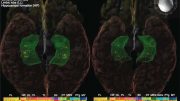


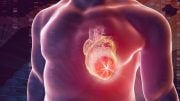
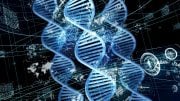
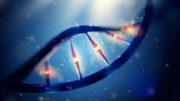

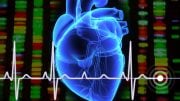
Now explain why the Dutch are the tallest people in the world (statistically speaking) and why taller would be better. The heart has a harder job pumping blood and a lot more food, i.e energy is required for the maintenance of the increase in biological mass. What’s the benefit here?